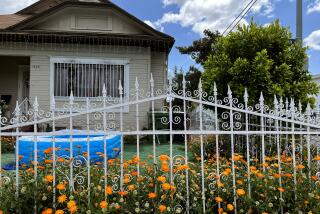Trickle-up urbanism: How one Tijuana designer wants to improve his city one tiny public space at a time
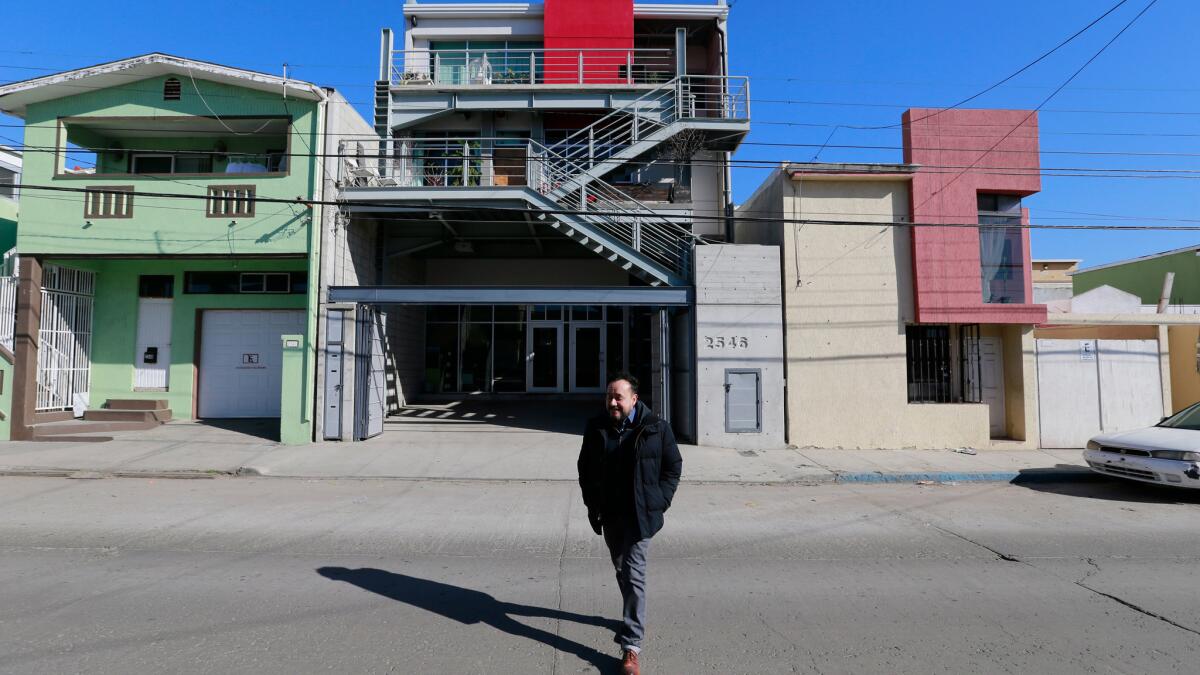
Reporting from Tijuana, Mexico — Buses regularly grind their way up Tijuana’s Cerro Altamira — or Altamira Mountain — which rises roughly 250 feet above the city and offers views of downtown and the U.S. border in the distance. But most of the city’s residents — Tijuanenses — reach the top of Altamira on foot, up a pair of staircases that wind their way up the steep hillside.
Until recently, these stairs were in a pretty sorry state. The Escalinata Altamira, along the mountain’s eastern flank, was first built in 1930 and had deteriorated in many spots to nothing more than crumbling concrete. Another set of steps, which reach Calle Segunda (Second Street) on the hill’s northern face, was also problematic: Overly steep in some areas, strewn with trash in others.
But where others saw a site riddled with crime and neglect, architect Aaron Gutierrez saw opportunity. His Tijuana-based studio Amorphica recently restored the Escalinata Altamira and made a number of improvements to the Calle Segunda stairs, a hodgepodge of trails that connect a well-traveled bus stop to the top of the mountain, where you’ll find Casa de la Cultura, a cultural center with a library, a theater, and arts and dance classes for children and adults. There are also a number of schools in the vicinity, which is one of the older parts of Tijuana. (Cerro Altamira was already settled by the 1940s, when the border city of 1.8 million had a population of just 22,000.)
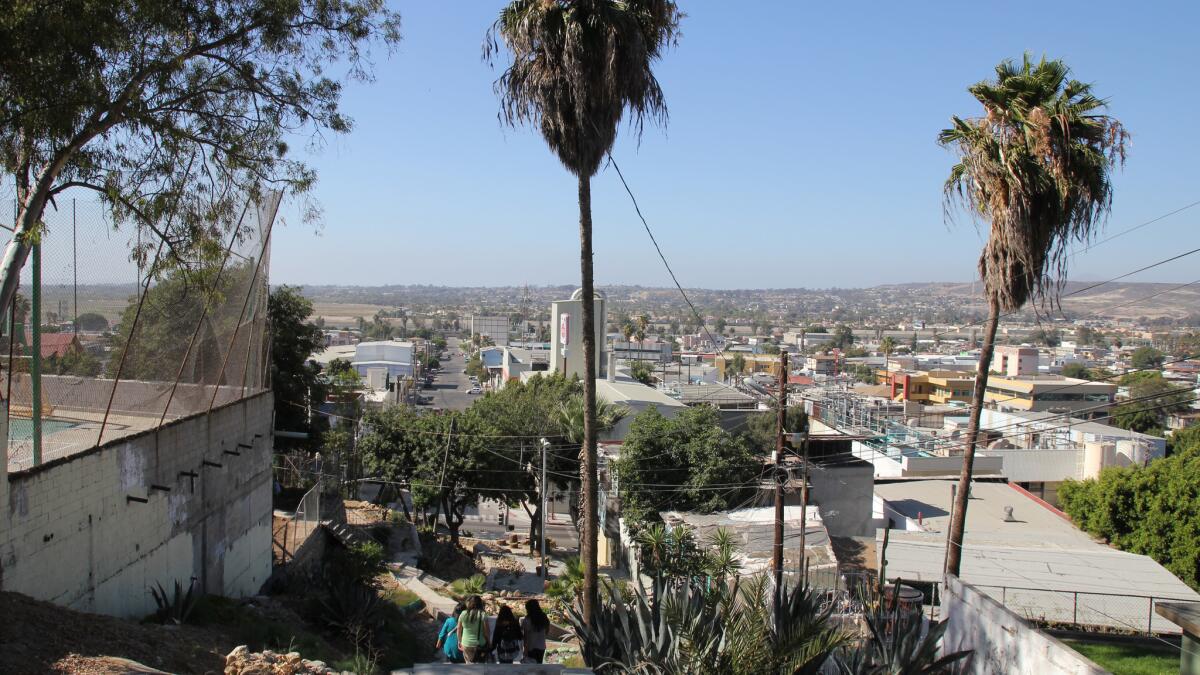
The stair restoration is just one example of Gutierrez’s approach to surgical improvements that can change the aspect of a city. Others include re-landscaping a forgotten median, improving the grounds of a brutalist building, tidying up a flight of public steps with some careful design and engineering.
“These are small, urban interventions that can transform quality of life in the city,” Gutierrez says. “When we got here, the [Calle Segunda] stairs were so old, the incline was so steep in parts, the old ladies could barely get up.”
In the U.S., most urban planning projects require a government entity to issue a request for proposals to redesign a public space, but in Tijuana, these are changes are largely motivated by the architects themselves.
“We go and we see certain space,” Gutierrez says. “We take pictures and we do renderings of what it could look like. We publish it and we speak to people in the community and hopefully the money becomes available.”
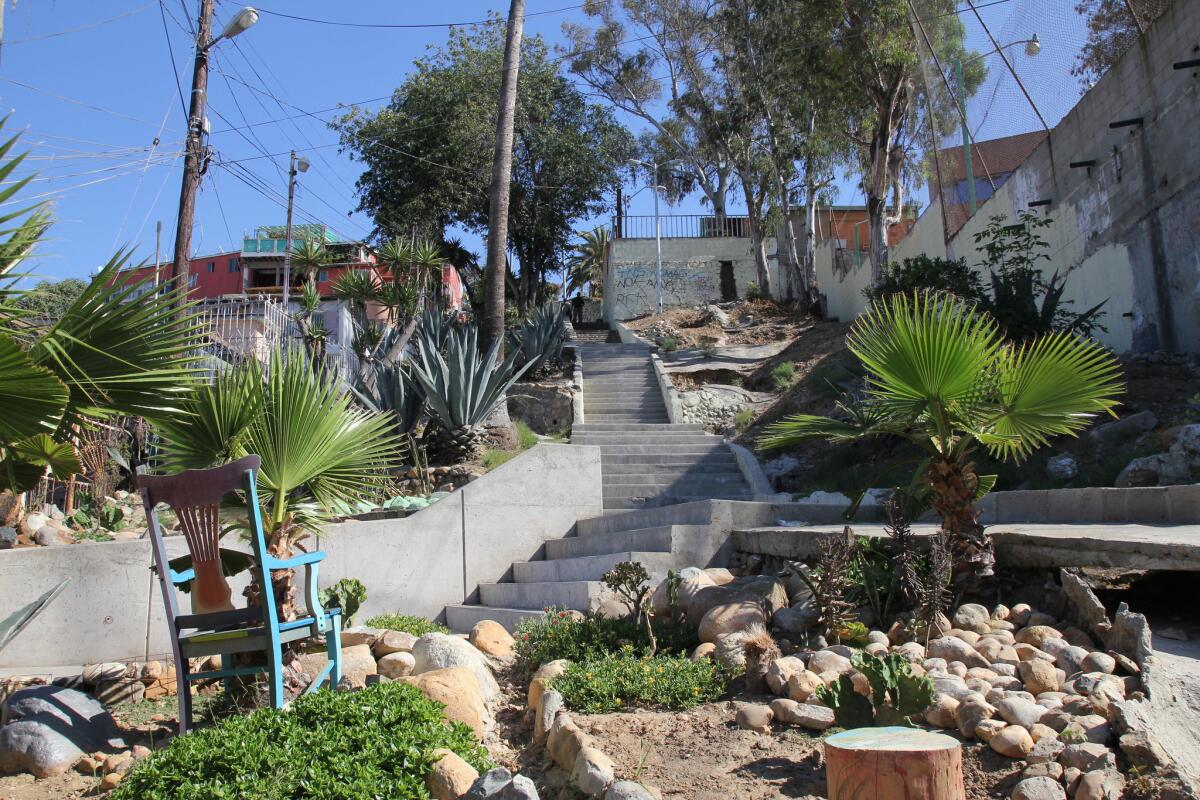
Others working in this style include Tijuana architect Rene Peralta, who has proposed a solar farm for the Tijuana River as a way of generating green power locally — an idea that he has been studying for feasibility.
In cities like Tijuana, where municipal funds for public improvement projects can be scarce, it’s a trickle-up urbanism of sorts. Says Gutierrez: “Here, you build your own path.”
On the Calle Segunda steps, the designers at Amorphica have made a number of improvements that have been completed over the last several months. This includes redesigning the angles of some of the pathways so that the steps aren’t too high or too steep, clearing out trash and digging a small drainage channel. (Previously, when it rained, the water would just run down the side of the mountain, eroding everything in its path.)
Toward the bottom of the hill, Gutierrez and his firm designed a small concrete terrace overlooking Calle Segunda — a space that can be used for public performances or gatherings. (It was an element that was still in progress when I visited last month.) Moreover, the city has added a street light to keep the path illuminated, thereby improving security.
The tab for the improvements at Calle Segunda stairs has come to roughly $80,000 — a drop in the bucket in the world of urban planning projects. But it’s a small investment that has made a big difference for the people who live along the steps, not to mention the stream of commuters who use the steps daily.
“When you see order,” says Gutierrez, “especially in a place that used to be treated like a dump, you have an awareness that it’s safe.”
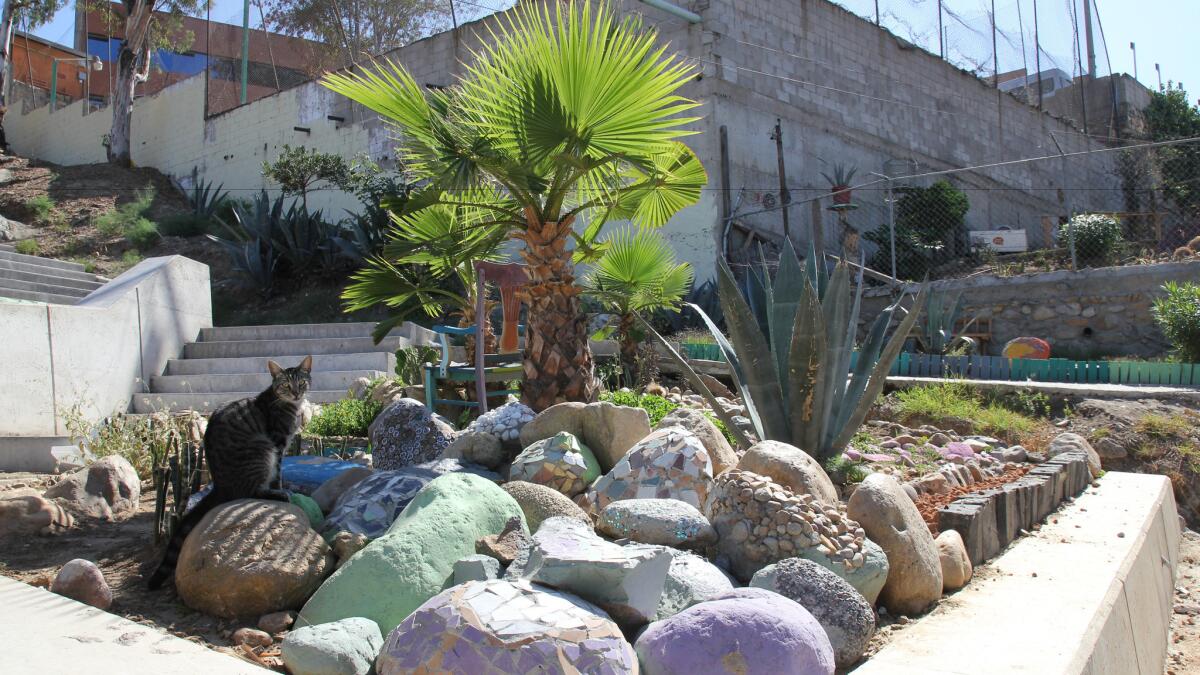
And though the changes are modest, they have inspired some local residents to make their own improvements. Cristián Rivera, who lives in a small wooden house that faces the steps, has planted a palm garden along the path, added whimsical rock mosaics and even a bowl of water for local mutts.
“I’ve lived here for 30 years and I feel like it’s my space,” says Rivera. “I like it when people come through and take pictures and sit here.”
Improving public space in this way is no cakewalk. Gutierrez had to lobby both the city and federal government for funds. He approached non-governmental organizations for donations. He secured in-kind materials — such as cement — from local construction firms.
“Clients don’t often have the money for a project,” says Gutierrez. “So we have to help find the money. In Mexico, you have to show up with the money.”
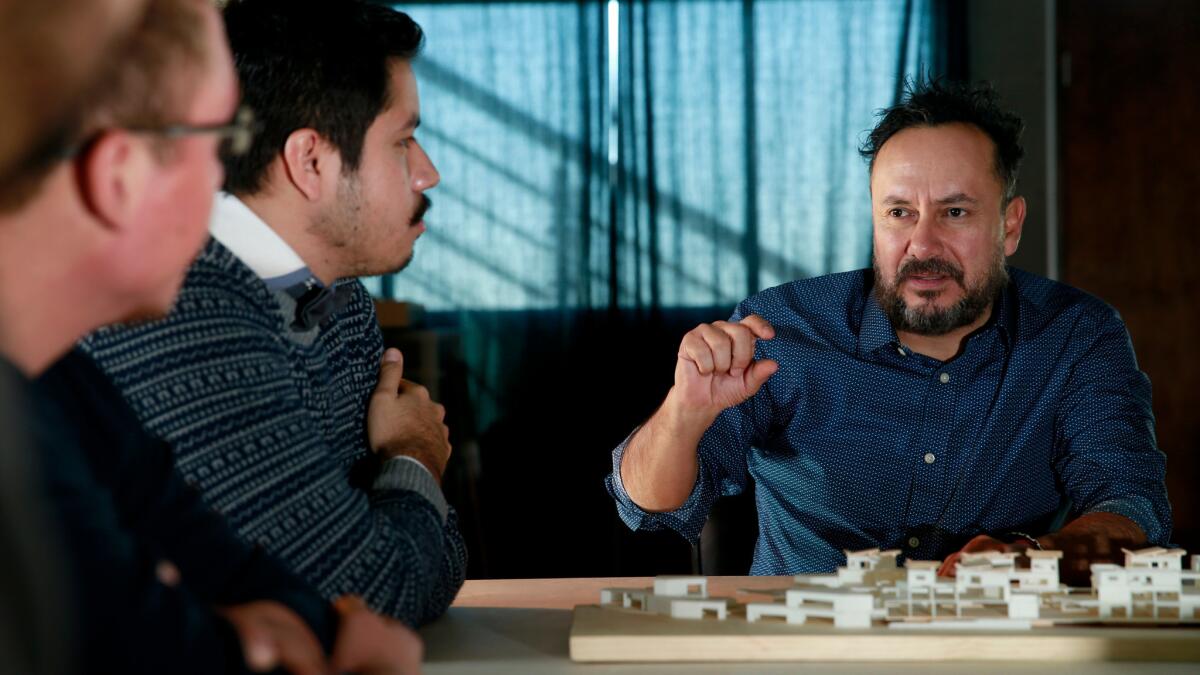
It’s the type of work that places the architect in the position of consensus builder (a role the Pritzker Prize-winning architect Alejandro Aravena has discussed as being essential to the creation of his own socially minded projects).
Of course, this way of working isn’t simple. Paperwork is epic. Government disbursements can take time. Delays are a natural part of the process.
But for Gutierrez, the projects are part of a long-running dedication to working within the Tijuana reality: Creating new types of bricks out of recycled local materials, designing a house that can be cheaply made with pressed earth, and working on urban improvement projects that have the aim of tackling disarray one sliver at a time.
“People don’t always notice design,” he says. “But they know when they can walk up a passageway because it is safe. That is what we want to do more of.”
Right now, he is studying the ways in which the façades of Tijuana buildings might be improved with simple architectural tweaks and how a functional school could be constructed on a broad traffic island in an underserved neighborhood. These projects haven’t been funded, but he hopes that by putting the ideas out there, he might be able to provide a design roadmap for the Tijuana of the future.
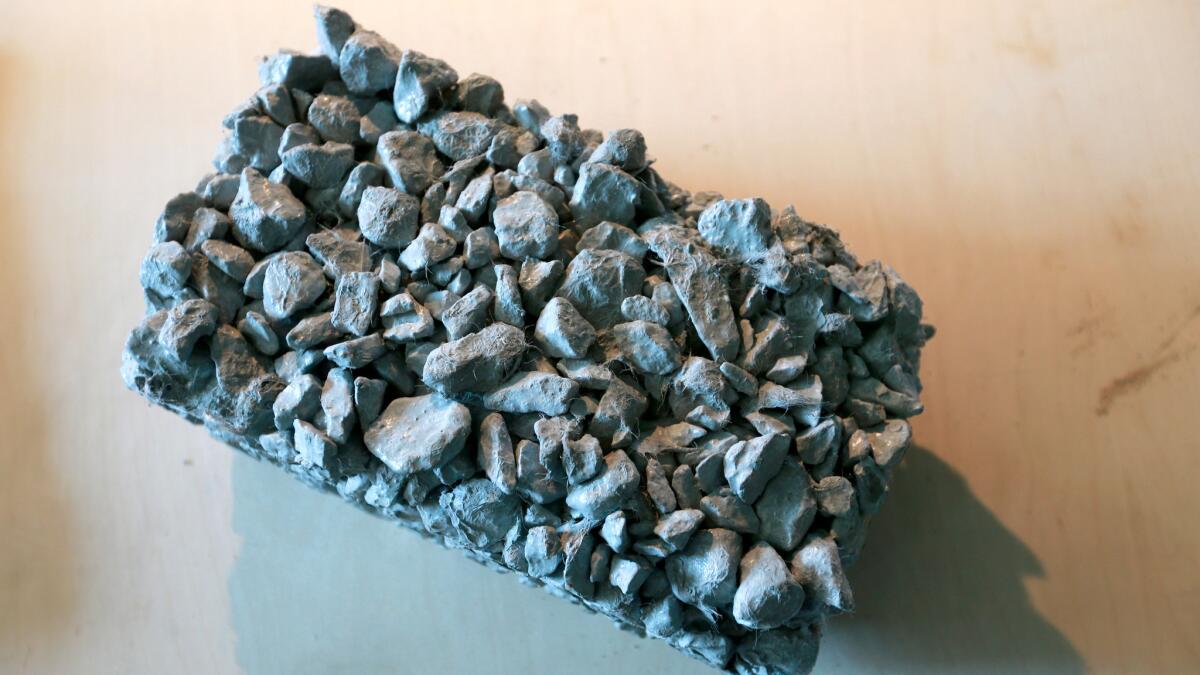
Find me on Twitter @cmonstah.
ALSO
An artist’s imposing new monument at Echo Park Lake honors Angelenos killed in violent crimes
Why two artists surveyed the U.S.-Mexico border ... the one from 1821
Architect Rene Peralta wants to build a solar farm on the Tijuana River. Would it work for L.A.?
More to Read
The biggest entertainment stories
Get our big stories about Hollywood, film, television, music, arts, culture and more right in your inbox as soon as they publish.
You may occasionally receive promotional content from the Los Angeles Times.


